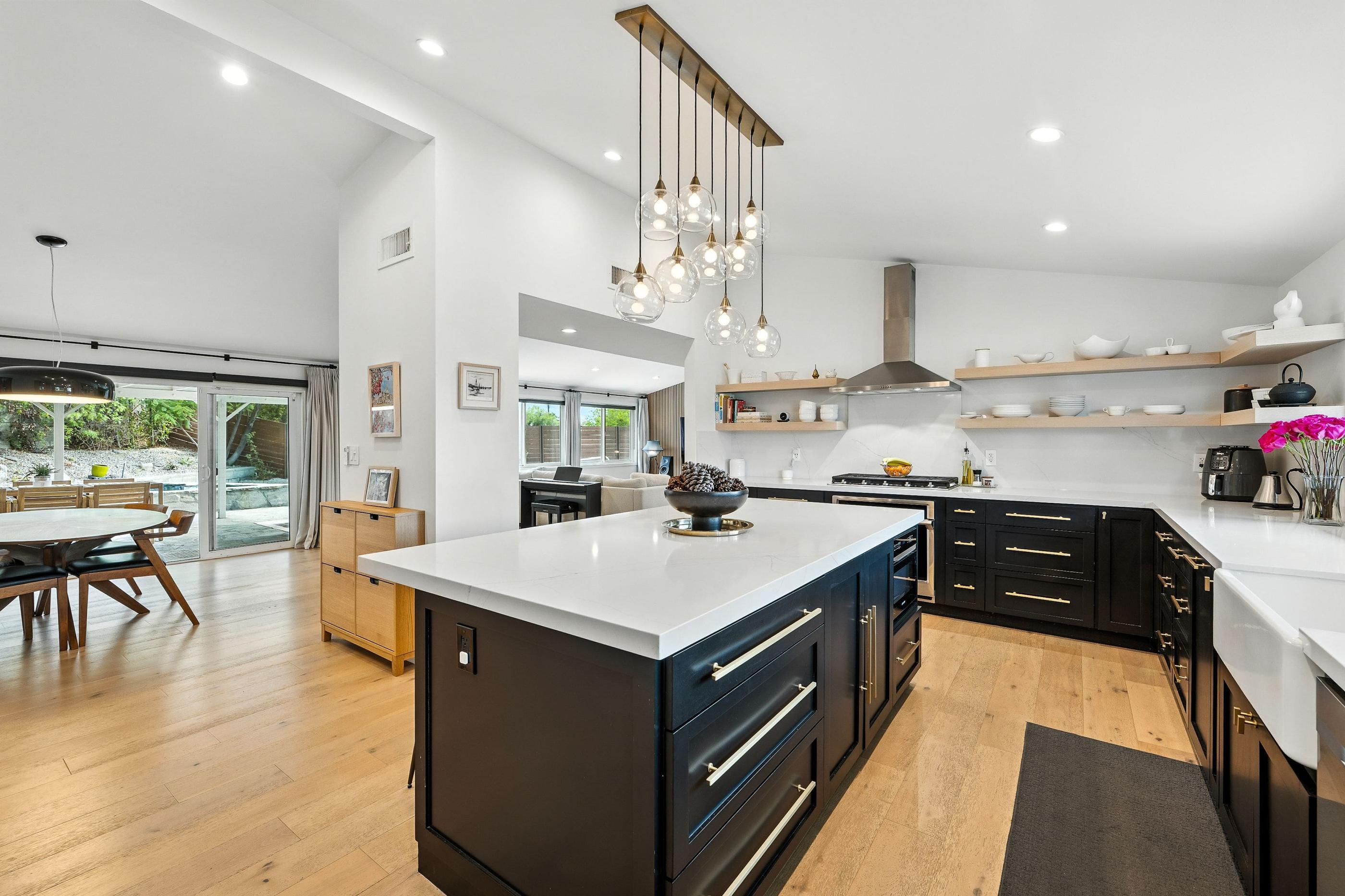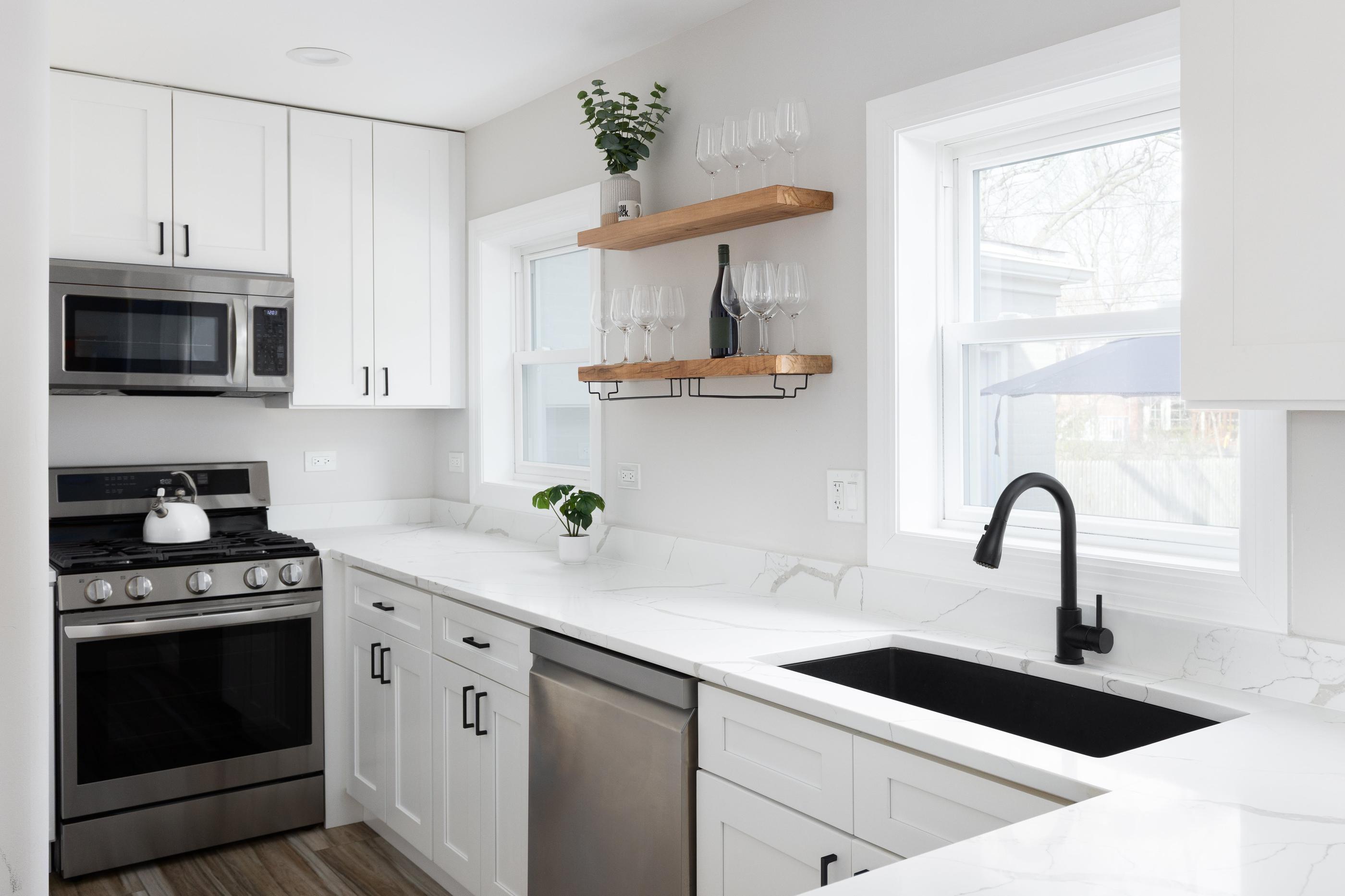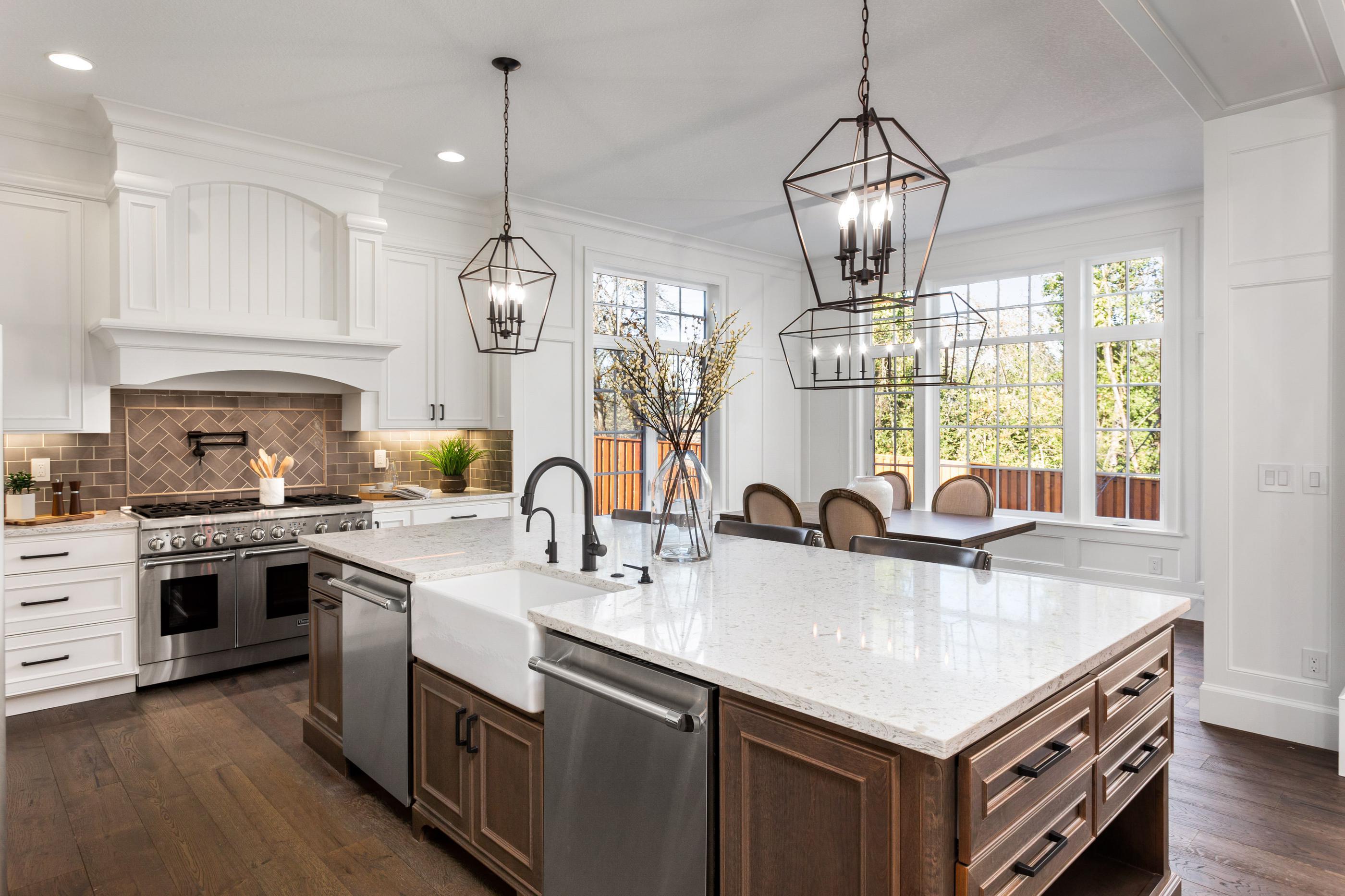According to the National Association of Home Builders (NAHB), kitchen remodeling is still among the most popular renovation projects.
Just because everyone wants to do it doesn’t mean they know where to start. With essential utilities, aesthetics, and much more in the mix, it’s easy to overlook an important detail.
That’s where this guide comes in. Keep reading to learn more about the process, and start ticking the boxes on your kitchen remodeling checklist.
Kitchen Remodeling: A Step-by-Step Guide
A kitchen remodel can transform your home’s heart into a more functional and beautiful space. Follow this guide to ensure your project goes smoothly from start to finish.
Step 1: Planning
Starting a kitchen renovation requires careful planning:
- Gather ideas to define the look and feel of your dream kitchen. You can include everything from cabinet designs to preferred color schemes. Spend time reviewing Pinterest boards, interior design magazines, and more. Taking in as much inspiration as possible will make the next part easier.
- Identify specific design elements you want, narrowing down your research to what you love the most. Consider countertop and flooring materials, cabinet design, and the appliances you’ll be replacing.
- Establishing a budget with extra room for unplanned expenses helps prevent financial stress later. Experts suggest keeping your spending to no more than 15% of your home’s value. Also, plan to save an extra 20% for those just-in-case scenarios. Running into unexpected costs happens more often than not.
- Set clear priorities for your remodel. Determine what needs an upgrade the most. Consider splitting your wish list into categories like “must-haves,” “would be great to have,” and “if there’s room in the budget.”
- Hiring a qualified remodeler is crucial at this stage. Reach out to multiple companies and request bids in writing. Always check references and reviews.
PRO TIP: Don’t forget to plan how your household will be managed without a kitchen during renovation. Will parts of the kitchen still be accessible during different phases of construction? Will you have to eat out every day? Figure this into your budget.
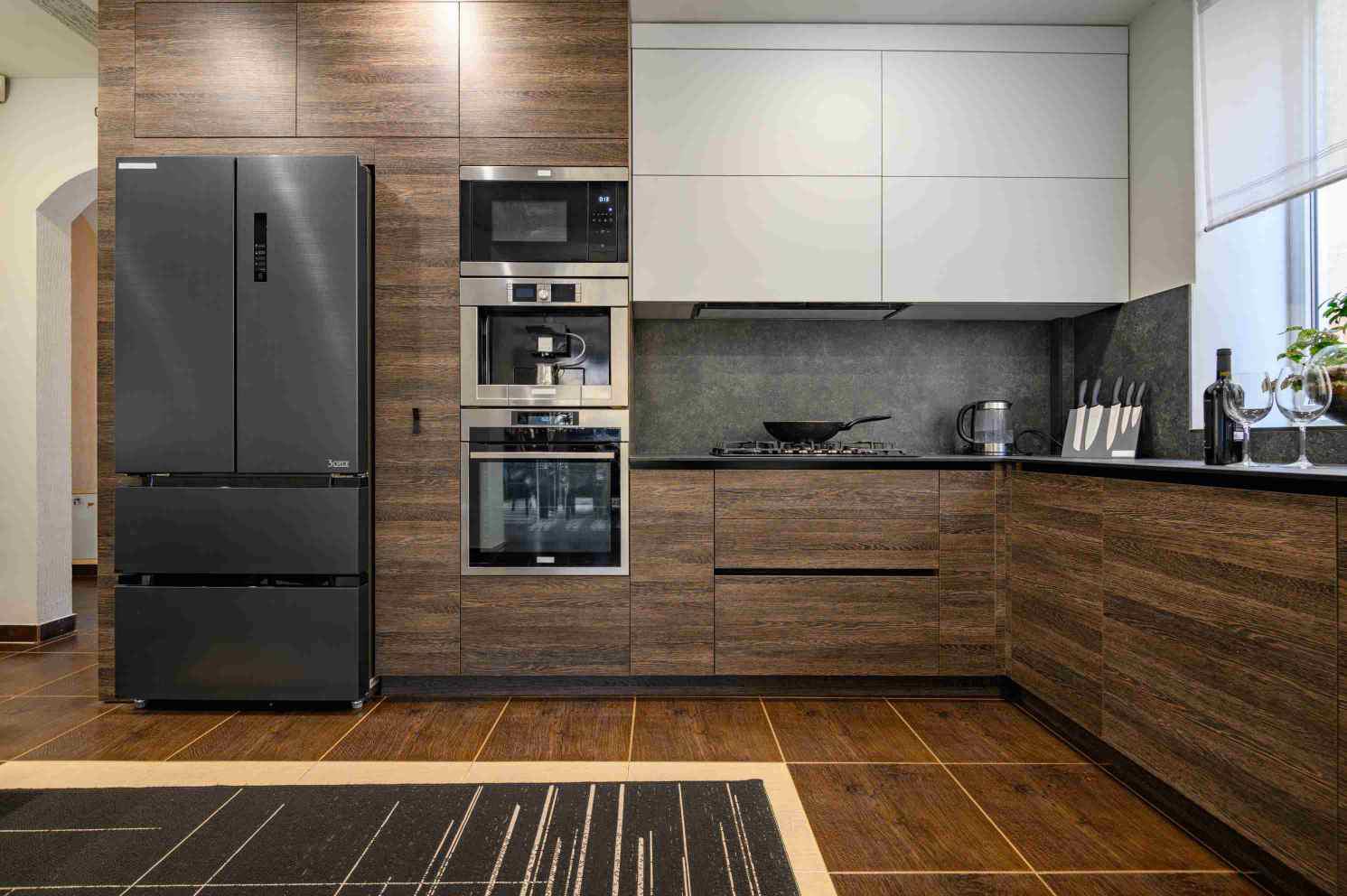
Step 2: Choosing Appliances and Materials
When choosing appliances and materials for your kitchen remodeling project, consider the following factors:
- Energy efficiency: Look for appliances with ENERGY STAR certification, which ensures they meet high energy efficiency standards and can help reduce utility costs.
- Ease of operation: Select appliances and materials that are user-friendly and fit your lifestyle. For example, you like the look of a gas stove, but there are additional costs and a learning curve that may not be worth it if you don’t cook often or have never used gas.
- Style and finish: You may save some money mixing and matching between brands but be sure this aligns with your vision. You might be more satisfied by choosing a finish (stainless steel, black, or neutral) and investing in a matching set.
- Safety: Prioritize safety features in appliances, such as automatic shut-off settings or childproof locks, to create a secure environment in your kitchen.
- Ease of cleaning: Opt for low-maintenance materials and appliances that are easy to clean and maintain, saving you time and effort in the long run.

Step 3: Designing the Perfect Layout
Designing the perfect layout for your kitchen ensures functionality. Here are some key aspects to consider:
- Work zones: Divide your kitchen into zones based on tasks like cooking, cleaning, and storage. This approach will make the space more organized and efficient.
- Traffic flow: Ensure enough space between work areas to allow for smooth movement within the kitchen, preventing congestion and accidents.
- Storage solutions: Incorporate ample storage options, such as cabinets, drawers, and pantry space, to keep your kitchen clutter-free.
- Lighting: Strategically place fixtures to provide adequate lighting in different work areas of the kitchen, making it safer and more comfortable to use.
When designing your kitchen layout, consider your space and how you use it to inform the redesign. Popular layouts for busy kitchens include the island workstation and the zone approach. Check this article to get insights on the most popular kitchen layouts. Consider how each layout complements your cooking habits and routine, allowing you to create a practical yet stylish space that suits your lifestyle.
Hiring a Contractor
When remodeling your kitchen, hiring the right team is crucial to a successful project. Before beginning any work, consult with a general contractor to ensure that safety and quality standards are met.
A proficient kitchen remodel requires expertise in various areas such as design, construction, and installation. Experienced general contractors possess the skill set needed to manage these complex tasks.
Seeking professional assistance for a kitchen remodeling project is advisable. This approach helps avoid common remodeling pitfalls and ensures the highest quality outcome for your kitchen renovation.
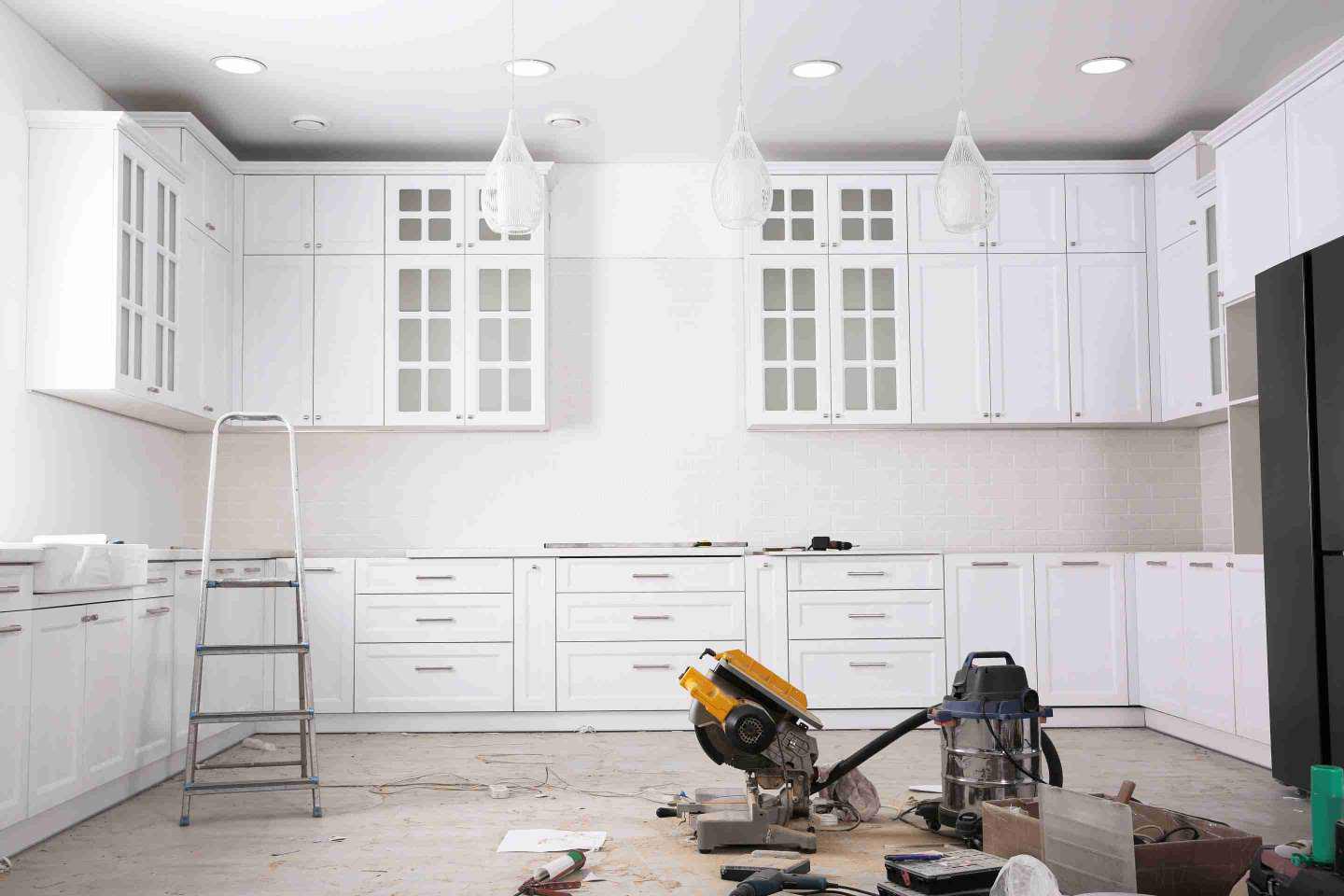
Kitchen Remodeling Checklist
Here are the most important steps for remodeling your kitchen, as well as the key aspects to consider in the following checklist:
- Gather ideas and define the look of your kitchen.
- Identify specific design elements, including cabinet designs, color schemes, countertops, and appliances.
- Research, seek recommendations, and hire a qualified remodeler.
- Set clear priorities for your remodel, categorizing them into “must-haves,” “nice-to-haves,” and “budget-dependent” items.
- Establish a budget, including allowances for unexpected expenses (recommended to allocate an extra 20%).
- Factor your budget in both material and labor costs.
- Prioritize energy-efficient appliances.
- Set aside an additional 20% for unexpected expenses.
- Consider ease of operation and cleaning, maintenance, and safety features for appliances and materials.
- Determine the best layout for your kitchen.
- Plan work zones for cooking, cleaning, and storage.
- Ensure sufficient space for traffic flow to prevent congestion.
- Strategically place lighting fixtures for adequate illumination
Get Ready to Remodel
Follow our essential checklist to ensure a smooth kitchen remodeling experience. Plan meticulously, choose efficient appliances and materials, and design a layout that suits your needs. Whether you opt for DIY or hire a contractor, be prepared to face challenges while balancing your budget.
Lastly, prioritize organization in your new kitchen space and consider affordable alternatives before embarking on this exciting journey.


